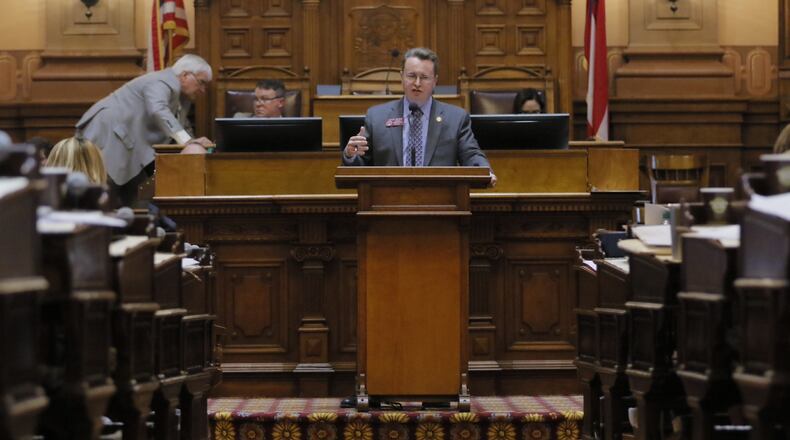When Gov. Nathan Deal signs The First Priority Act into law, he will assume new powers over schools with large populations of under-performing students.
This is what House Bill 338, passed by the Georgia General Assembly on March 28, does:
1. Some call it "OSD lite" or "OSD plan b," and though it shares some characteristics of the Opportunity School District rejected by voters in a November referendum, it falls short of the sweeping powers that constitutional amendment would have given the governor.
2. Unlike with the OSD, there will be no statewide school district run by a governor’s appointee. Instead, the position of “chief turnaround officer” will be created. The officer will be an employee of the state Department of Education, but instead of reporting to agency head Richard Woods, the elected state superintendent, the person will report to the state Board of Education, which drives DOE policy and whose members are appointed by the governor. The turnaround chief will employ “coaches” to help school districts identify obstacles to achievement, establish improvement plans and track progress.
>>Read more: the tug of war between Gov. Nathan Deal and state Superintendent Richard Woods
3. Money: the burden of improvement falls on school districts. Each must implement their improvement plan at their own expense, unless they plead poverty and can demonstrate their financial need. To help with costs, Deal got $2.2 million added to the next budget, and lawmakers approved legislation for a tax-credit fueled "innovation grant" that could generate up to $5 million a year for three years.
>>Read more: controversy over tax credits for private and public schools
4. Under the OSD, the governor would have been granted sweeping new powers to take over “chronically failing” schools. The First Priority Act doesn’t allow a state takeover per se; instead, it authorizes the state turnaround chief to turn schools over to private managers after three years. (Unlike with the OSD, these managers cannot be for-profit entities.) Also, school board members could be removed after five years.
>>Read more: what the state could do to low-performing schools.
5. How do schools get targeted for intervention? Unlike with the OSD, the governor will not have full control of the process. Lawmakers gave the state Department of Education authority to establish the list of lowest-performing schools using federal guidelines. The turnaround chief must pick from that list.
>>Read more: Department of Education versus Governor’s Office of Student Achievement
6. The OSD would have changed the constitution to allow the governor to intrude on what many see as sacred -- local control over schools. Lacking that authority, the state must resort to cooperation -- or coercion if it doesn’t get it. Only two of Georgia’s 180 school districts -- the city of Buford and Webster County -- are not getting waivers from state mandates. The other 178 districts signed “charter” or “waiver” contracts with the Department of Education that allow them to ignore costly requirements such as maximum student-teacher ratios or minimum school days per year. The First Priority Act requires these districts to amend their contracts to allow state intervention in low-performing schools. Refusal means loss of the waivers, and expensive mandates.
>>Read more: school districts add the word “charter” or “waiver,” and gain freedom to innovate
About the Author
Keep Reading
The Latest
Featured



